2021 | Generation
On Belonging, Not Belonging, and the Power of the Imagination
The films in the Generation selection are an open invitation to go beyond obvious, dominant or loud gestures and to take a closer look beneath the surface. In this interview, section head Maryanne Redpath talks about the multi-faceted worlds young people are experiencing today and explains how important it is to pay attention to the seemingly small things.
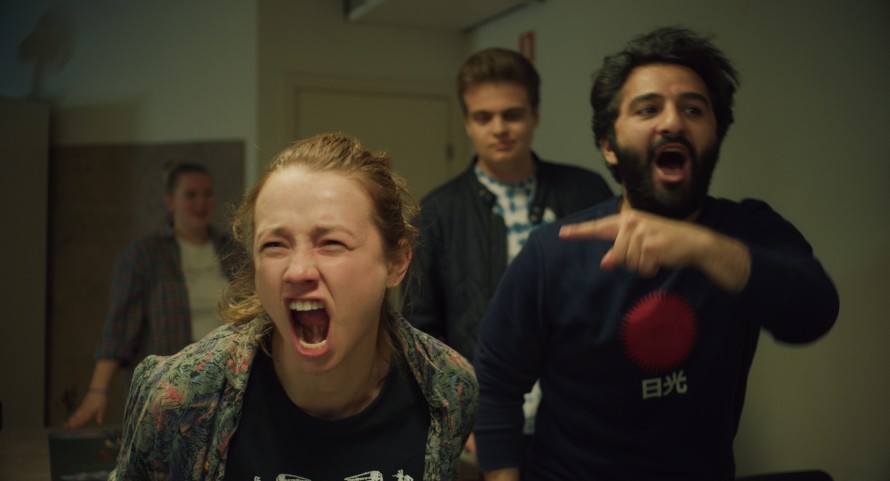
Kristine Kujath Thorp and Nader Khademi in Ninjababy by Yngvild Sve Flikke
Two years ago, the Fridays for Future movement announced itself as a major new force for climate justice. Those efforts have been stalled somewhat by the coronavirus. Do the selected films of this year's Generation programme reflect a concern with the environment, and do you think this will continue to be an important issue for future generations?
Here and now, and with or without the pandemic, young people have no choice but to be confronted by the climate crisis and lack of real change we're seeing. It's their future which is at stake, along with that of the planet. I'm very much a defender of the Fridays for Future movement, of their spirit, strength and belief in science, but actually it is we adults who should be urgently addressing this crisis. As Greta Thunberg says, how dare we make children responsible for their future and that of our planet. I also think to myself, how dare we, as adults, simply do nothing.
In terms of the Generation selection, there are several films which are directly or indirectly related to the climate crisis and which examine the human condition and our relationship with nature. For instance, we have the thought-provoking Danish documentary From the Wild Sea by Robin Petré. The climate makes up the actual setting – the waves and the storms that are hitting the Southwestern coast of England. These storms, which are much more violent than they used to be, are injuring a lot of sea animals that need to be rescued. Other wild animals are suffering and dying from ingesting plastic or being injured and crushed by boats. We literally observe some of them dying on screen. The film opens up a space for audiences to perceive this, as well as themselves. It doesn't moralise or point a finger; it just opens up that space. You're watching these animals in really long poetic images – and those animals are looking right back at you. Thus you enter into a dialogue with the animals, which is incredibly profound, and you leave with a lot of questions. There's no clear black-and-white answer, but in order to initiate change, people need to start thinking more deeply about what's at stake. This film is confrontational in a very soft, gentle, poetic and heart-wrenching way.
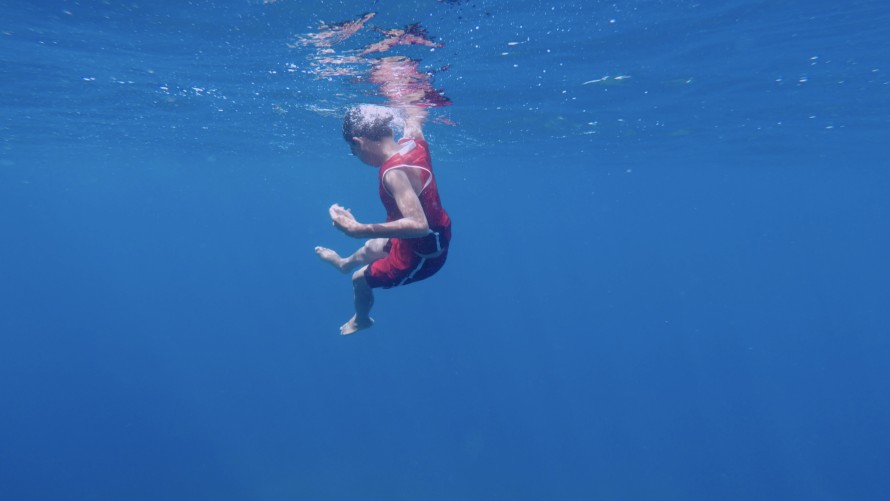
John Russel Rey "Reyboy" Paño in Last Days at Sea by Venice Atienza
Another film which is directly linked to the theme of climate justice is the documentary Last Days at Sea by Venice Atienza. It's a collaboration between the director and a young boy who lives in a fishing village that is totally isolated from the rest of the Philippines. It's located on the coast and there's no road in or out. These are Reyboy's last days before he must move to the city to go to school. He's on the cusp of growing up and taking this big step into the outside world. The director beautifully records not only his philosophy and his relationship to his home, but she also shows the village, his community and its environment. From the outside it might look very idyllic, but his community is living in a world of great change. The oceans are being overfished by factory fishing boats too close to shore, so the fishermen need to venture out even further to catch their fish, which is very dangerous on their small boats. And there's a lot of plastic washing up along the coastline, so it becomes impossible to idealise the place as a pristine paradise. Amongst other things, this film shines a light on how climate injustice and social injustice are linked.
Several of this year's films focus on outsiders who have been marginalised by society – be it an autistic girl in Una escuela en Cerro Hueso (A School in Cerro Hueso), protagonists seeking refuge in other countries in Ensilumi (Any Day Now) and Fighter, or a Mohawk girl in Beans. How do these protagonists find a way out of their isolation?
Una escuela en Cerro Hueso, the feature film debut by Betania Cappato from Argentina, is about a girl on the autism spectrum. Ema's family has moved to Cerro Hueso, a humble town on the outskirts, to get their daughter into a setting that will embrace and help her, after having already being turned down by 17 other schools. What's very special about this film is the fact that the central figure is autistic, and as a viewer you have the feeling you're perceiving the world through her eyes. It's typical for Generation films to show a young protagonist's perspective, but autistic children are so limited in their capacity to express what they're thinking, feeling or perceiving. The film is a very sensitive portrayal of this young protagonist who enters a new setting and who cannot interact or express her reactions to it. The magic of the film lies in the moments where you see her partially coming out of her shell. For her parents, it's a huge relief to see that their daughter is accepted by others and to see her begin to reach out, touch a horse and do small things other children may do.
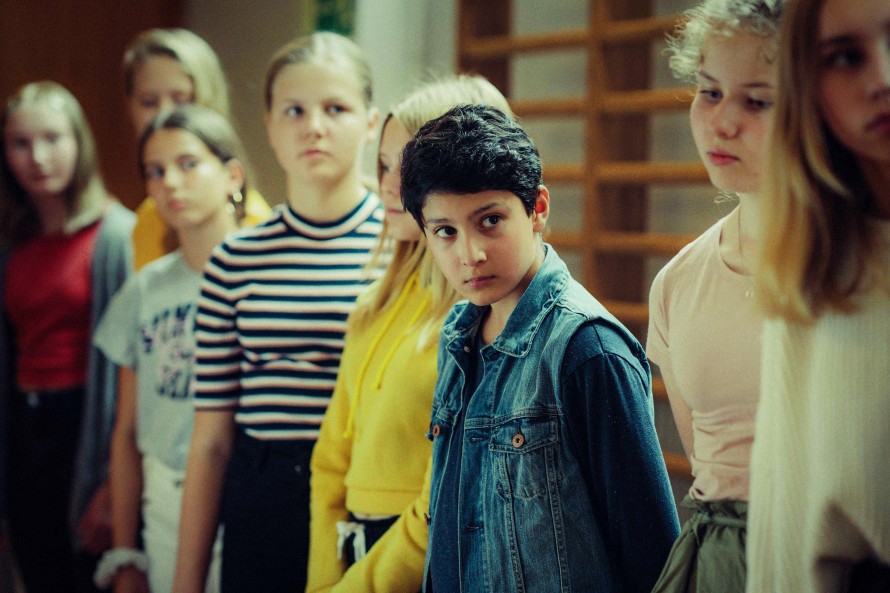
Aran-Sina Keshvari in Ensilumi by Hamy Ramezan
In terms of marginalisation, in Hamy Ramezan's film Ensilumi, a family is waiting to see if their asylum application will be accepted or denied. When the rejection comes, the son Ramin keeps it secret. He and his younger sister have no choice but to accept their family's fate, which is in fact very cruel. But as a family they function well together, and it is the love of the family which keeps them going and believing in a better world. At the same time, Ramin is coming of age, and he has all those other questions you have, when you're moving from childhood to adolescence. He asks his dad how to talk to girls and gains his first experiences with the opposite sex. The film has a very powerful ending. In the face of great adversity, Ramin and his family remain strong, proud and loving, maintaining their sense of family, community and the desire for a place they can call home.
Fighter by Jéro Yun is also very much about being an outsider. Jina has escaped from North Korea and is trying to come to grips with life in Seoul. Her mother already fled the North years ago and has a new family somewhere in the city. Jina wants to find her, but they have completely lost contact. Her father wants to join her but is caught on the Chinese border. So this young woman who is completely on her own finds a job and works really hard to make ends meet. The film is set at a boxing studio, where she starts as a cleaner. But she knows how to box as well, because she learned it in the military where she comes from. There's a fantastic scene in which the boxing coach asks her if she wants to start boxing again and she says "No, I don't want to fight". And he looks at her and says, "But boxing isn't fighting, it's a sport". This demonstrates – in a nutshell – the difference in mentalities between North and South Koreans. Eventually, Jina begins to adapt to her new surroundings. She even discovers what it's like to have feelings and while she does not totally assimilate into her new society, she sure as hell acquires some tools to make a go of it.
In Beans, a film by Canadian filmmaker Tracey Deer, the young protagonist is of Mohawk First Nations origin. As an Indigenous person who is applying for an elite school, she's an outsider. Tekehentahkhwa, who more often goes by her quirky nickname Beans, is super intelligent and wants to go far in life. This all happens in the context of a blockade – based on the Oka uprising of 1990 in the town of Oka in Quebec, Canada – in which her people courageously stand up against the white supremacists who are threatening their sovereignty. Beans learns who her allies are and how they provide the ground beneath her feet, as well as stability and a strong sense of belonging. That's an essential aspect of the Indigenous perspective, and the film is embedded in ancestry and commitment – to nation, family and country.
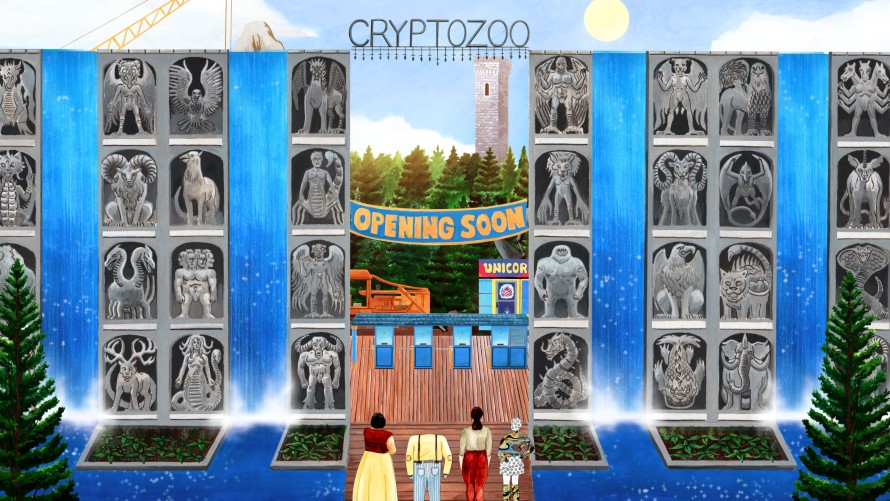
Cryptozoo by Dash Shaw
Another film about fighting outsiderness is Cryptozoo by Dash Shaw, who presented his feature film debut My Entire High School Sinking into the Sea at Generation 14plus in 2017. In his latest animated feature, fantastic creatures called cryptoids are severely under threat. Based on mythological beings from all over the world, from an ancient Greek Gorgon to a Japanese dream eater, these creatures are being persecuted, captured and put into a newly opened 'cryptozoo'. With the military in hot pursuit and their backs against the wall, they rebel using all their superpowers. This is their way of regaining their own sovereignty. The film is also very much about the power of the imagination. The director states that everything you can imagine is real.
Generally speaking, filmmakers in the Generation selection use the creative power and imagination of their filmmaking and of their young protagonists to fight hardship, social marginalisation, climate change, religious sanctimony, the complications of love, systemic dysfunction and other serious matters.
Families seem to be absent in several of the films. Would you say those films celebrate friendships or romantic longing as providing support and comfort instead?
It depends on how you define family. I would say that in many of the Generation films, young protagonists are discovering new forms of family beyond the nuclear idea of a mother, father and child – although that particular model can also be seen. In La Mif (The Fam), directed by Fred Baillif, teenage girls from really dysfunctional homes come together in a residential care home where they live together with social workers. This new setting, a refuge for them, is what they call La Mif - The Fam. As these young women enter their new home, they bring all their conflicts with them, and their clashes are really tough to watch. But they also learn to develop their sense of intimacy, a sense of proximity or distance from others, and to understand what they can and cannot bear. In real life, the director has actually worked as a social worker, and he also sees himself as in this role as a film director. He uses an interesting structure for the film, where scenes between the young women and their social workers are repeated from different points of view. The film was made collaboratively, and the actors brought their own experiences and backgrounds to the material, too. So that's one very strong family film, albeit not in the classical sense.
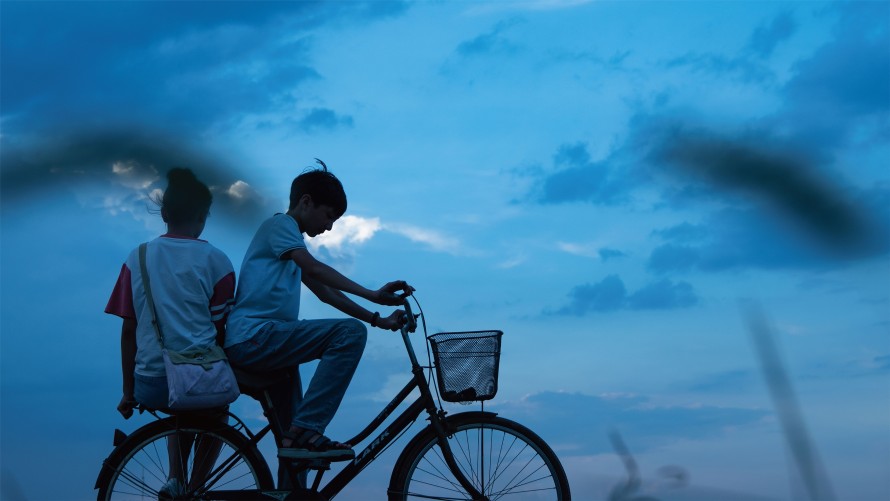
Huang Tian and Zhang Xinyuan in Han Nan Xia Ri (Summer Blur) by Han Shuai
In the Chinese film Han Nan Xia Ri (Summer Blur) by Han Shuai, we see a girl living separated from her birth family. Thirteen-year-old Guo, who is at the centre of the film, is standing on the bridge between childhood and puberty. She lives with her aunt's family in Wuhan, who don't treat her very well, while her mother is off working and enjoying life in Shanghai. Our protagonist is left alone in an unfamiliar place with all her observations, longings and secrets, and the way she develops and grows up is quite painful because she doesn't have the support and comfort she needs. It's not all unhappy – it's also incredibly profound, tender and impressionistic – but her loss of real family is very strongly felt in the film. She finds support through friendship, and in the end she and her aunt's family gain a better understanding of each other, in small ways.
In Jong chak yeok (Short Vacation) by director duo Kwon Min-yo and Seo Hansol from South Korea, you hardly see the families of the four main girls, but among themselves they form a strong bond. Armed with analogue throw-away cameras, they go on a journey to the end of the world to take pictures for their photo club. The film shows how these digitalised girls perceive the world on their own through these analogue cameras and thereby actually lose interest in their smartphones. They reflect and talk about their new surroundings, their interpersonal relations, as well as their feelings, where they're from, and their relationships with different generations of relatives. In addition to friendship there is a sense of family. These four girls form alliances with each other, and even if they're not always all in the same image, you know they're together and have each other's backs. That's a sense of stability which comes from another kind of family, I would say.
In Stop-Zemlia, Kateryna Gornostai's feature film debut, the focus is on a group of Ukrainian high school students. It's a portrait of a strong, supportive and loving friendship between the three main characters. One of them, Masha, falls for an unattainable boy in school and wonders how to talk to him and make him realise she exists. It's a really flowing film, navigating the emotional turmoil and romantic longing of teenagers who are waiting for life to begin.
In Igor Drljača's Tabija (The White Fortress) a young man, Faruk, has lived with his grandmother in Sarajevo since the war. There's a lot of criminality around him and he might drift off into it because his grandmother cannot really take care of him. At the same time, he meets a young woman who comes from the 'better' side of town. If there's family support for these two protagonists, it's very weak, even corrupt. Both family structures are not in the position to provide a secure environment for growing up. So the only chance for these star-crossed lovers is to move forward and leave the place they once called home. The film is like a fairy tale in many ways, but it also feels very dangerous at other times.
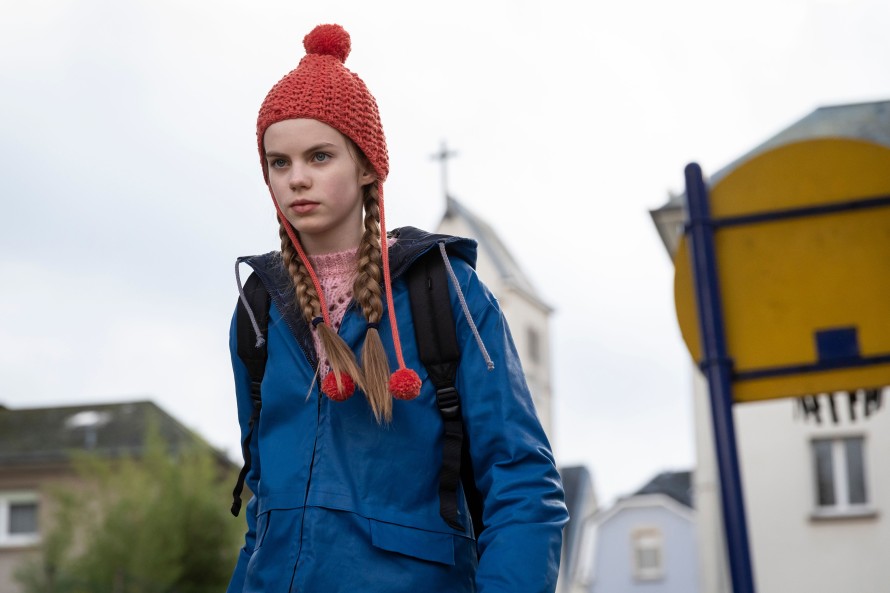
Romy Lou Janinhoff in Mission Ulja Funk by Barbara Kronenberg
Over 60 % of this year's Generation films are by female directors. Does that explain the abundance of headstrong female protagonists? And would you say there's a distinctly female perspective on display here?
Each of these 16 directors, be they male or female, have their own perspective which they bring to their film. Having said that, yes, we definitely have a lot of female heroines this year who are incredibly brave, daring and clever.
Ninjababy is about a young Norwegian woman who discovers she is pregnant. She doesn't want to have a baby or become a mother, and that is certainly the perspective of the director, Yngvild Sve Flikke, who is very much for a woman's right to choose. It's a courageous film, and for some people it may be quite shocking to hear that statement about not wanting to become a mother or wanting a child. But the film is extremely light-hearted and humorous in how it lets you share this young woman's journey. In my opinion, it's a very female film, about the feelings surrounding pregnancy, but the development of the male characters is just as interesting.
Mission Ulja Funk is also by a female director, Barbara Kronenberg, and features a central female figure who is a heroine in the best sense of the word. Ulja is a girl from the Russian-German community, who arms herself with science and thereby pits herself against religion. She's very single-minded, fears no obstacles and leads us through a very entertaining road movie.
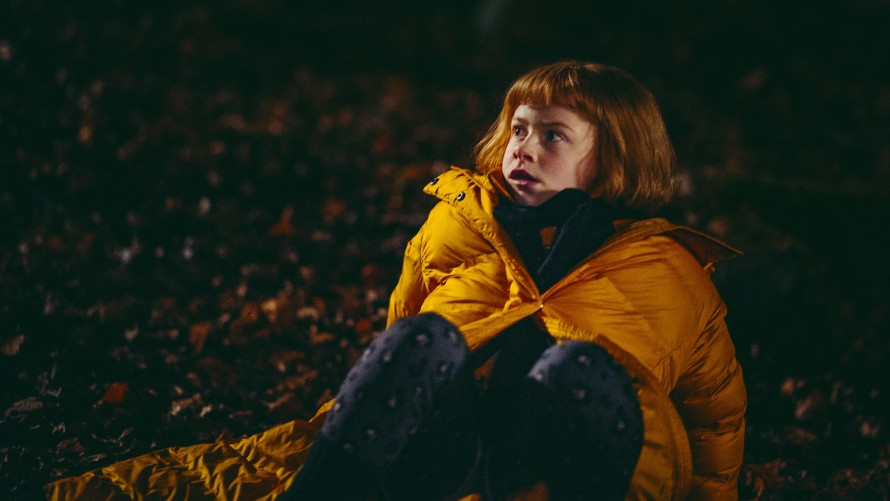
Matilda Gross in Nelly Rapp – Monster Agent by Amanda Adolfsson
In Nelly Rapp – Monster Agent by Swedish director Amanda Adolfsson, young Nelly wants to become a monster agent like her mother. She discovers a parallel world full of monsters, vampires and ghosts and embarks on an adventure where she proves to be absolutely fearless. The movie is really scary, by the way. I asked the young actress who plays Nelly Rapp, Matilda Gross, whether she was afraid while making the film, and she said yes, when a werewolf is trying to attack you, who wouldn't be!
Han Nan Xia Ri is another film with a strong female sensibility. I feel like it could only have been made by a woman because of its sensitivity towards this young girl. While watching, I kept wondering why the main protagonist was so cranky. Towards the end of the film, she experiences her first period and it's a huge drama because she doesn't know what's going on with her body and her mother isn't there to look after her. I reflected upon this important issue of menstruation which features in several films we've shown over the years. Your first period is a really big deal, as all women know.
For me the sensitivity of the imagery and the way in which the film Una escuela in Cerro Hueso, which I mentioned earlier, is put together seems very 'female'. I do believe there is such a thing as the female gaze, but I think many signs point to it. All the female directors in this programme have created completely unique films and the female perspective is there to explore, experience and enjoy. I wouldn't say that male directors are exempt from this way of looking at things, I just recognise that women do it more noticeably.
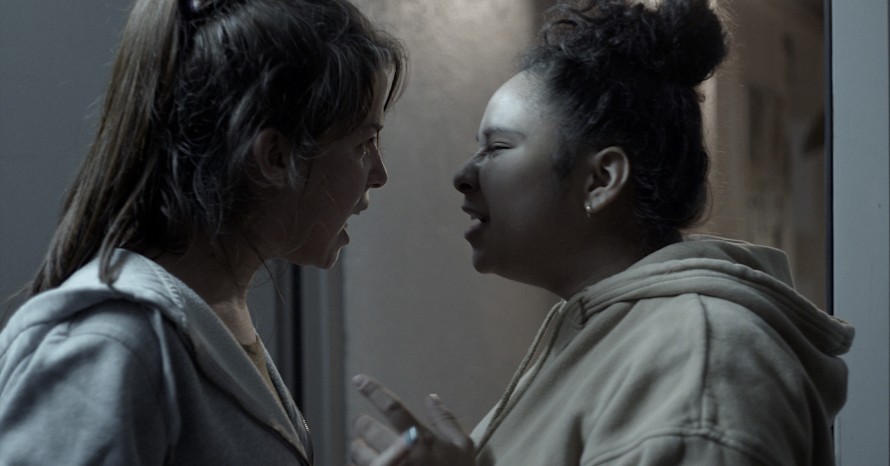
Melody Despont Marin and Kassia Da Costa in La Mif (The Fam) by Fred Baillif
Most of this year's directors are under the age of 40. Is it typical for younger directors to tell coming-of-age stories? And are we less able to relate to childhood as we get older?
Coming of age is something that happens at all ages. It can happen at the age of 80 or 45, twelve or four, so it's not really the exclusive property of young directors. Of course, young directors might remember their adolescence or childhood more acutely. I find that often a director's first or second feature is based on their own early memories in some form.
What is most important is the filmmaker's attitude and openness towards young people. That's equally important in curating the films for Generation; you have to come at it with respect and a lack of moral judgement. In the case of a film like La Mif, it's important to recognise that the director never judges his teenage protagonists. He doesn't condemn them for misbehaving, being difficult or rebellious, swearing at their parents, avoiding church, being violent or complaining too much. None of these films feature any moralising overtones. If they do exist, they're shown in a way that allows the viewer to be more critical of the moral judgement than of the young person in question.
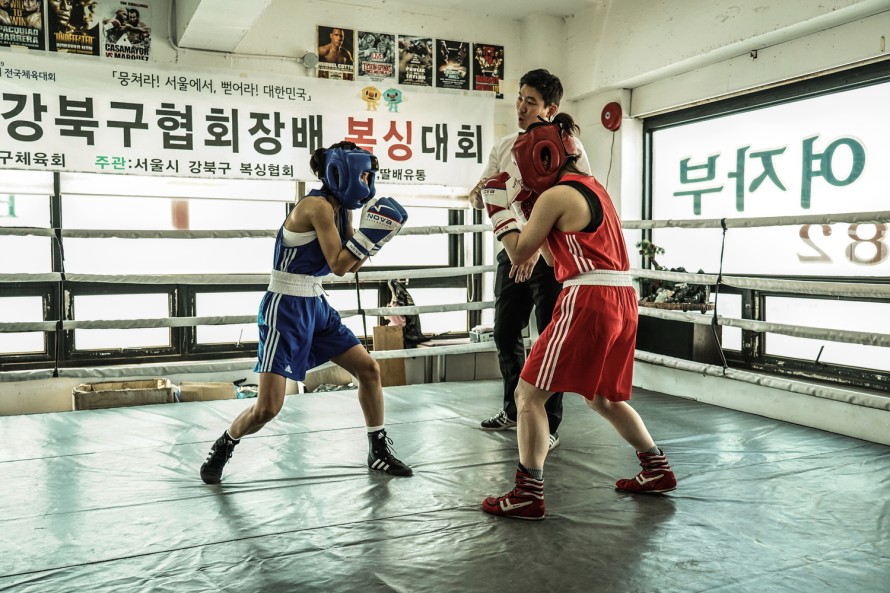
Fighter by Jéro Yun
It's been a very challenging year for the film industry. How were the 15 productions selected for Generation affected by the pandemic?
We've had different reactions from the filmmakers. All of them are suffering in terms of the uncertainties of the film industry, with cinemas shut in many countries, but they're very happy to be screening their films at the Berlinale and to our audiences at the Summer Special in June.
I was talking to Dash Shaw, the director of Cryptozoo, who is a cartoonist and animator who comes from the world of graphic novels. "When you read a graphic novel, it's a one-to-one relationship between yourself as an individual and the space that the book invites you into", he said. Interestingly, he can also draw something from watching a film all alone. However, his film is so visually and aurally bombastic that I would say you have to see it on the big screen with lots of other people and talk about it afterwards.
Fred Baillif, the director of La Mif, said he was lucky they'd finished their shoot before the first big wave of the pandemic hit Switzerland. Due to the extra time, he then had the luxury of editing and re-editing the film three or four times. He completely restructured the film and wouldn't have had that chance otherwise.
Finally, what was the first film you remember seeing at the cinema?
My first film was Mary Poppins – the one that had the most effect on me. I really loved all the music and dancing, the "Spoonful of Sugar" and magic. Looking back on my childhood, it was the first time I really remember appreciating the magic of cinema, and it really stayed with me for a long time. There are probably things I would cringe at these days, but I loved it when I was young. My grandmother taught me to sing all the songs, and it was so much fun.